Abstract
We consider a model of the photosystem II (PS II) reaction center in which its spectral properties result from weak (approximately 100 cm-1) excitonic interactions between the majority of reaction center chlorins. Such a model is consistent with a structure similar to that of the reaction center of purple bacteria but with a reduced coupling of the chlorophyll special pair. We find that this model is consistent with many experimental studies of PS II. The similarity in magnitude of the exciton coupling and energetic disorder in PS II results in the exciton states being structurally highly heterogeneous. This model suggests that P680, the primary electron donor of PS II, should not be considered a dimer but a multimer of several weakly coupled pigments, including the pheophytin electron acceptor. We thus conclude that even if the reaction center of PS II is structurally similar to that of purple bacteria, its spectroscopy and primary photochemistry may be very different.
Full text
PDF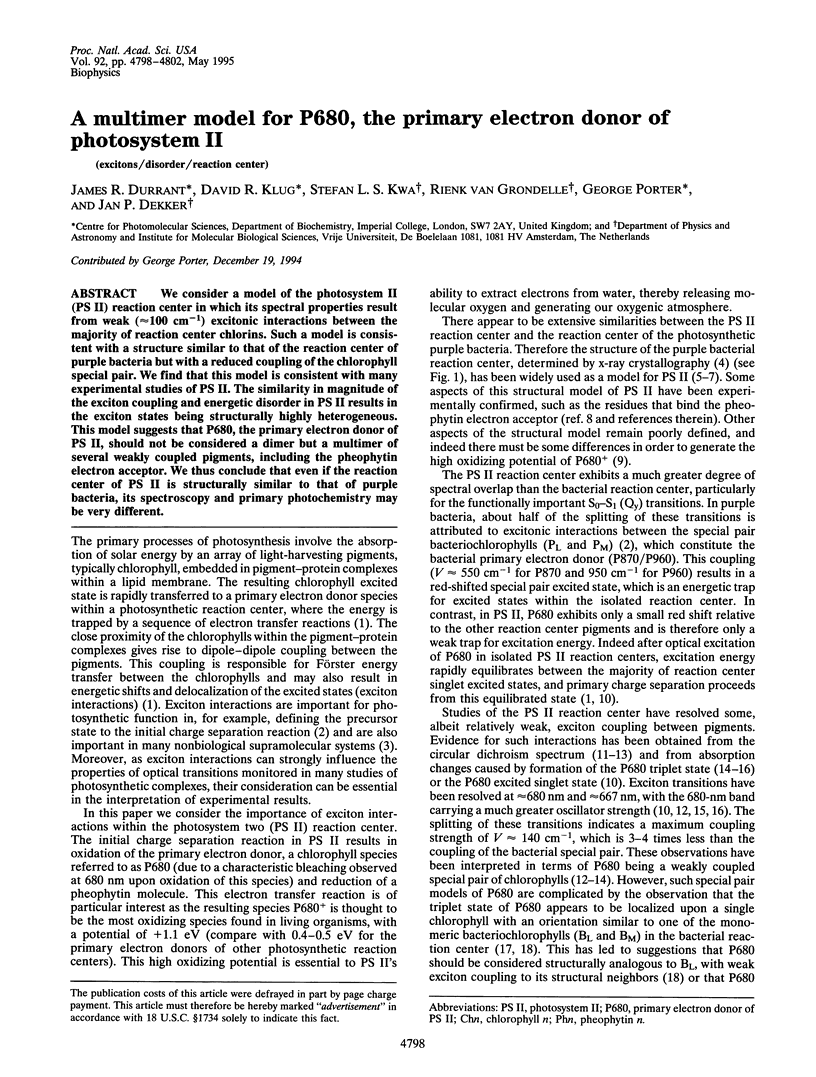
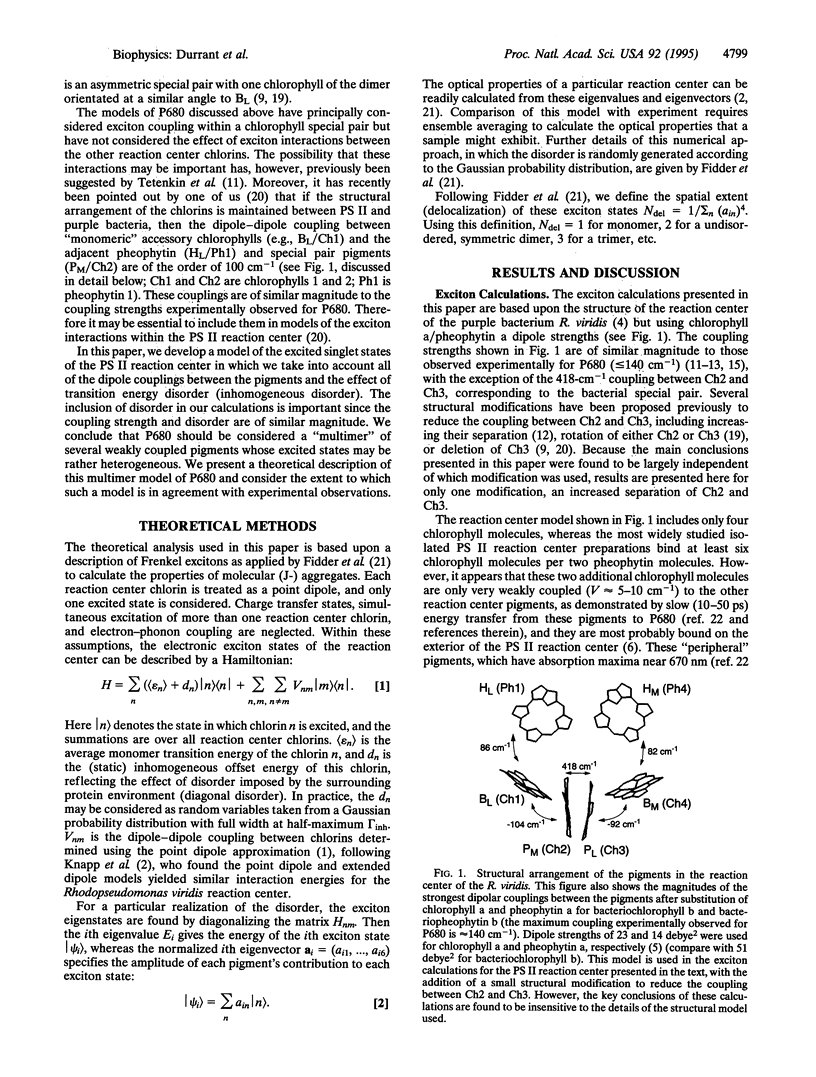
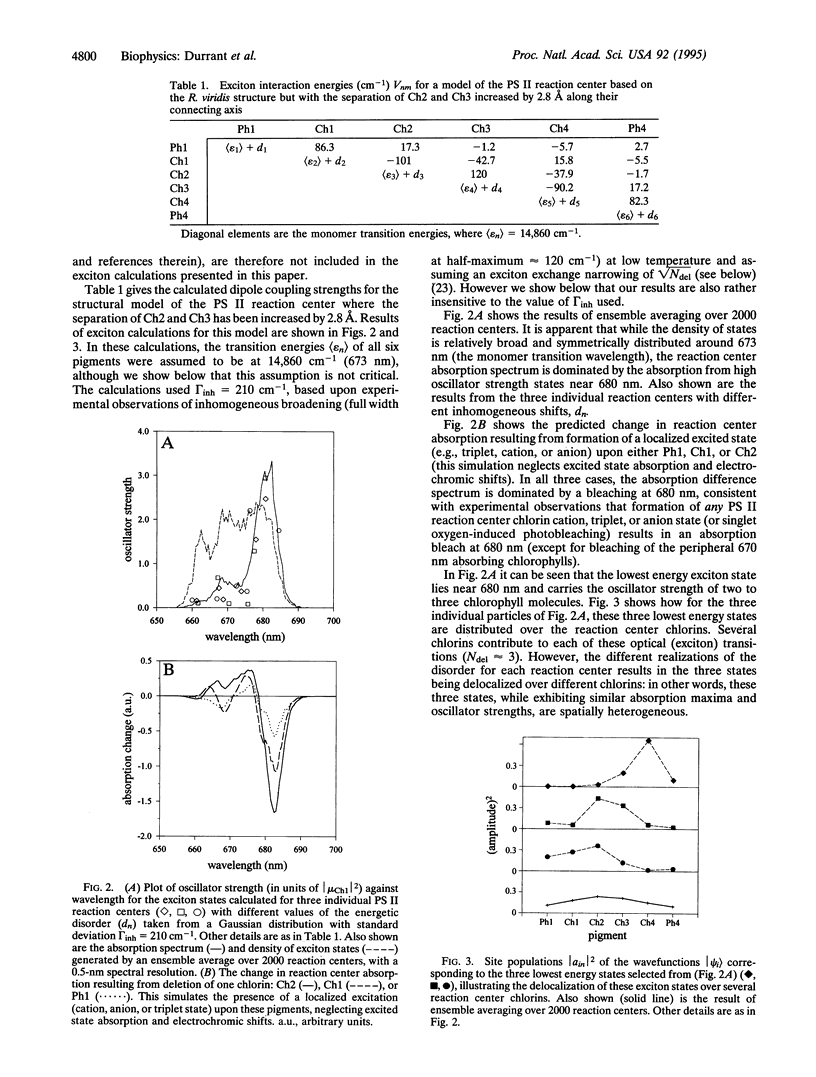
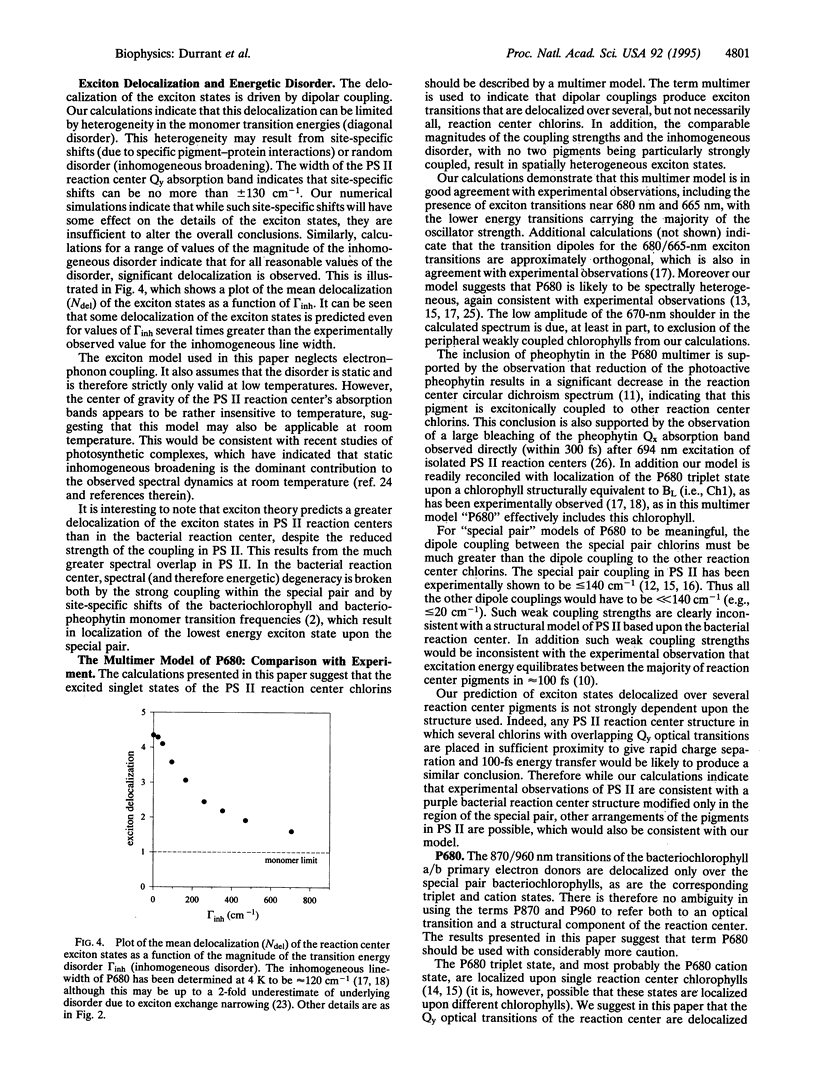
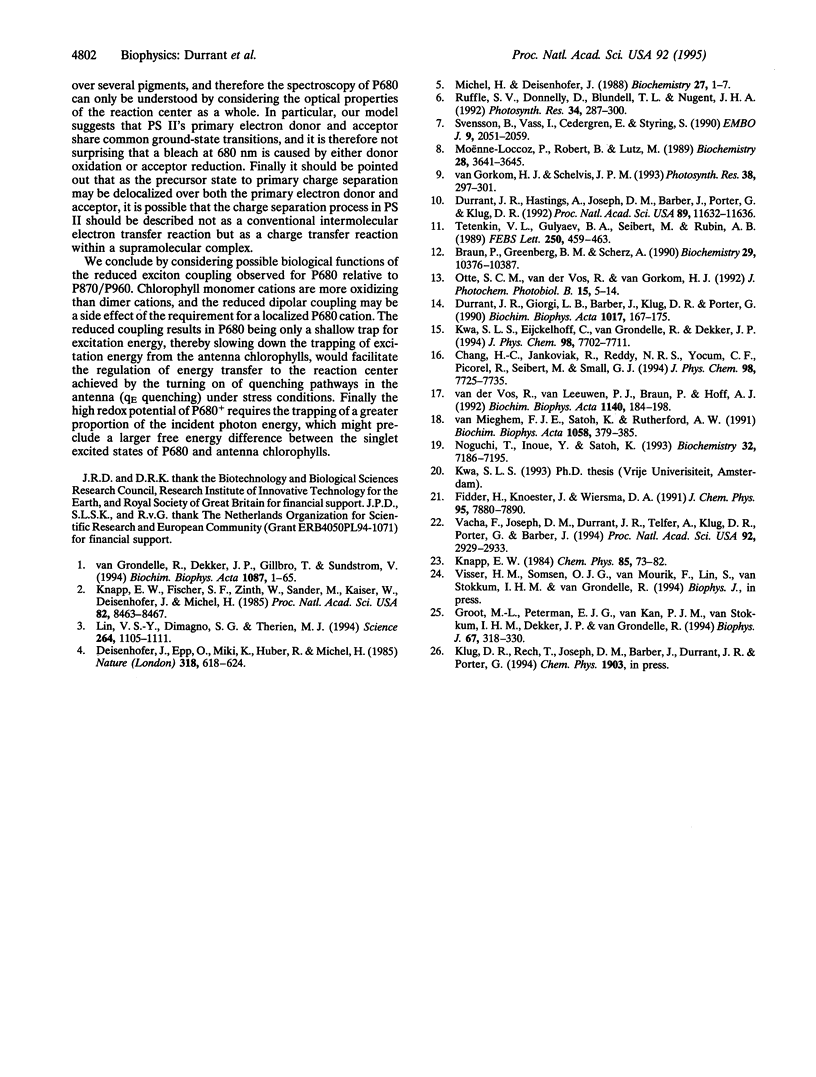
Selected References
These references are in PubMed. This may not be the complete list of references from this article.
- Braun P., Greenberg B. M., Scherz A. D1-D2-cytochrome b559 complex from the aquatic plant Spirodela oligorrhiza: correlation between complex integrity, spectroscopic properties, photochemical activity, and pigment composition. Biochemistry. 1990 Nov 13;29(45):10376–10387. doi: 10.1021/bi00497a012. [DOI] [PubMed] [Google Scholar]
- Durrant J. R., Hastings G., Joseph D. M., Barber J., Porter G., Klug D. R. Subpicosecond equilibration of excitation energy in isolated photosystem II reaction centers. Proc Natl Acad Sci U S A. 1992 Dec 1;89(23):11632–11636. doi: 10.1073/pnas.89.23.11632. [DOI] [PMC free article] [PubMed] [Google Scholar]
- Groot M. L., Peterman E. J., van Kan P. J., van Stokkum I. H., Dekker J. P., van Grondelle R. Temperature-dependent triplet and fluorescence quantum yields of the photosystem II reaction center described in a thermodynamic model. Biophys J. 1994 Jul;67(1):318–330. doi: 10.1016/S0006-3495(94)80483-7. [DOI] [PMC free article] [PubMed] [Google Scholar]
- Knapp E. W., Fischer S. F., Zinth W., Sander M., Kaiser W., Deisenhofer J., Michel H. Analysis of optical spectra from single crystals of Rhodopseudomonas viridis reaction centers. Proc Natl Acad Sci U S A. 1985 Dec;82(24):8463–8467. doi: 10.1073/pnas.82.24.8463. [DOI] [PMC free article] [PubMed] [Google Scholar]
- Lin V. S., DiMagno S. G., Therien M. J. Highly conjugated, acetylenyl bridged porphyrins: new models for light-harvesting antenna systems. Science. 1994 May 20;264(5162):1105–1111. doi: 10.1126/science.8178169. [DOI] [PubMed] [Google Scholar]
- Noguchi T., Inoue Y., Satoh K. FT-IR studies on the triplet state of P680 in the photosystem II reaction center: triplet equilibrium within a chlorophyll dimer. Biochemistry. 1993 Jul 20;32(28):7186–7195. doi: 10.1021/bi00079a016. [DOI] [PubMed] [Google Scholar]
- Svensson B., Vass I., Cedergren E., Styring S. Structure of donor side components in photosystem II predicted by computer modelling. EMBO J. 1990 Jul;9(7):2051–2059. doi: 10.1002/j.1460-2075.1990.tb07372.x. [DOI] [PMC free article] [PubMed] [Google Scholar]
- Vacha F., Joseph D. M., Durrant J. R., Telfer A., Klug D. R., Barber J. Photochemistry and spectroscopy of a five-chlorophyll reaction center of photosystem II isolated by using a Cu affinity column. Proc Natl Acad Sci U S A. 1995 Mar 28;92(7):2929–2933. doi: 10.1073/pnas.92.7.2929. [DOI] [PMC free article] [PubMed] [Google Scholar]


